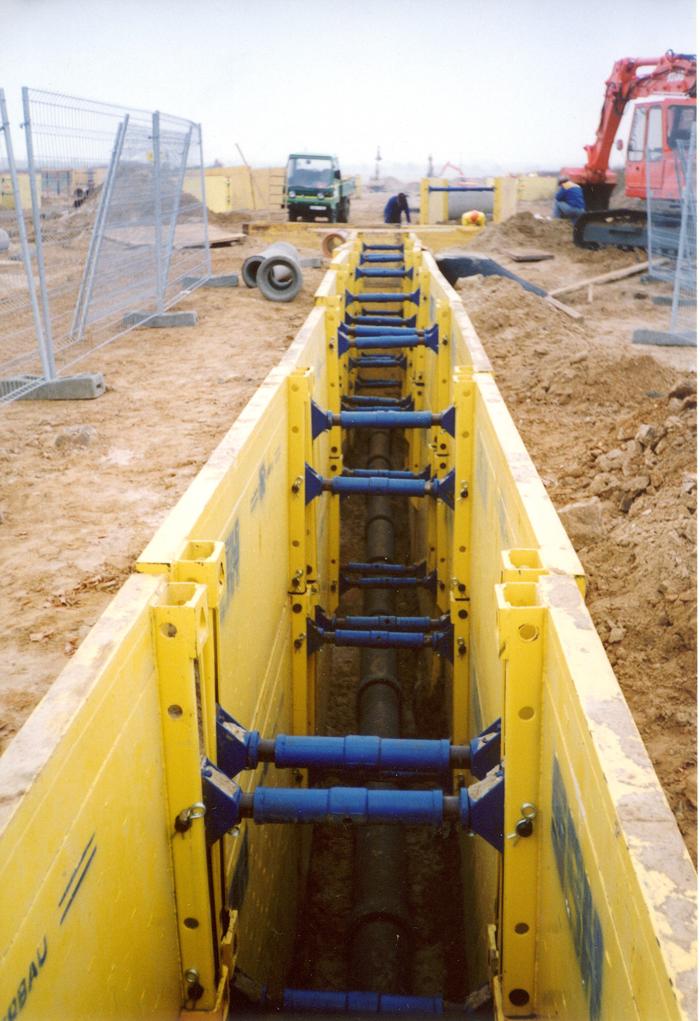Ministry of Labour inspectors will target hazards involving construction of trenches during a province-wide blitz in July and August 2015.
The increased enforcement is part of the province’s Safe At Work Ontario enforcement initiative, launched in June 2008.
The inspectors will visit construction projects where trenches are being dug.
A trench is an excavation that is deeper than it is wide. An excavation is a hole in the ground that is created as a result of removing dirt and other material.
Inspectors will check that employers, supervisors and workers are complying with requirements under the Occupational Health and Safety Act and its regulations.
Workers can be seriously injured as a result of the hazards involved in trench construction and excavation activities.
Wokers are at a high risk of injury or death if a trench collapses because even being covered with small amounts of soil can result in a worker’s inability to breathe. As well, a successful rescue may be impossible due to the soil’s unstable condition.
Between 2008 and 2014, 17 workers died and 42 workers were critically injured in excavation and trenching incidents at construction projects in Ontario.
Trenches are dug to:
- install or repair services such as natural gas, electrical, telecommunications and sewers
- construct and waterproof foundations
- stabilize soil while working on basement foundations of buildings
- construct supports for the construction of buildings or bridges
- build roads and repair utilities
Construction workers are at risk of injury due
- falls into trenches
- tripping over equipment or materials
- sudden collapse of unsupported trench walls
- excavated material or other objects falling on workers
- exposure to underground utilities or overhead electrical cables
- unstable nearby structures such as other buildings or foundations
- mishandled or poorly placed materials
- hazardous atmospheres (noxious gases/lack of oxygen)
- toxic, irritating or flammable and explosive gase
- incidents involving vehicles and other mobile equipment
Blitz Focus
Ministry inspectors will visit a range of construction projects where trenches are being dug. In particular, ministry inspectors will visit sites:
- where sewers, watermains and utilities are being installed
- with a high incidence of lost-time injuries involving excavation workers
- where complaints have been received and
- where there is a history of non-compliance.
Inspectors will take enforcement action, as appropriate, in response to any violations of the Occupational Health and Safety Act and its regulations.
They will focus on the following key priorities:
Trench work notification: Inspectors will check that employers are following requirements to submit the appropriate notice (either a Notice of Project or Trench Notice) to the Ministry of Labour, when required.
Trench wall support: Inspectors will check that trench support systems are in place or excavation walls are properly sloped. They will also check that support systems are designed by a professional engineer if the systems are prefabricated, hydraulic or engineered. Inspectors will check that employers are determining the site’s soil type to ascertain the strength and stability of the excavation walls. Inspectors will also check that trench and excavation walls are being stripped of any loose rock or other material that could slide, roll or fall on a worker. Inspectors will check that constructors are taking appropriate precautions to prevent damage to nearby structures, including employing a professional engineer to specify in writing any precautions to be taken. They will also check that safe access and egress is available to workers in and out of trenches.
Utilities locations: Inspectors will check that before beginning work, employers identify, locate and mark utilities to prevent worker contact with gas lines, electrical conductors and other services during excavations. They will also check that utility owners supervise the uncovering of potentially hazardous utilities if the services cannot be disconnected during the excavation.
Safety measures: Inspectors will check that employers have measures and procedures in place to prevent slip, trip and fall hazards. They will also check that a barrier at least 1.1 metres (42 inches) in height is provided, when required, at the top of an excavation if it does not meet regulatory slope requirements and is more than 2.4 metres deep. Inspectors will check that a clear work space of at least 450 millimetres (18 inches) is maintained between the excavation’s wall and any work platform.
They will also check that workers are not working alone.

